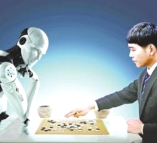题目内容
【题目】Earth Day Photo Contest

A picture is worth a thousand words! Enter the TFK photo contest and show us: Why is Earth Day important to our planet?
To enter online, visit timeforkids.com/2017earthdaycontest and get details below.
TIME
● The contest begins on January 9, 2017.
● The contest ends on April 20, 2017.
INSTRUCTIONS
● An original and previously unpublished photograph that answers the Earth Day question “Why is Earth Day important to our planet?” and that was photographed by the Entrant (参赛者) between June 1, 2016, and April 20, 2017.
● A caption describing the picture, what is happening, where the photo was taken, the date the photo was taken and why Entrant chose to enter this image.
● Entrant’s first name only; Entrant’s email address; and parent’s, teacher’s or guardian’s email address. Limit one entry per person. Sponsor is not responsible for lost, late, or incomplete entries, or entries not received for any reason. Entries belong to Sponsor, and none will be acknowledged or returned.
● By entering, Entrant guarantees that the entry is original and has not been published in any medium or won an award.
ELIGIBILITY
Open to residents of the 50 United States and the District of Columbia who are elementary school students ages 8–13 years at time of entry.
WINNERS’ LIST and PRIZES
Judges will select 10 Semifinalists from which one Grand-Prize Winner and nine Finalists will be chosen. The Grand-Prize Winner will receive a digital camera—approximate retail (零售) value: $300.00. The photograph entry of the Grand-Prize Winner will be published in the April 22 Earth Day issue of TIME For Kids. The photograph entries of all Semifinalists will be published in the gallery of timeforkids.com. Winner will be informed by email, and must respond within five days.
【1】An Entrant who will participate in the photo contest should ________.
A. send an original photo establishing the Earth Day
B. present a relevant description of the photo entry
C. inform the sponsor of his or her delayed email
D. offer his or her email address and family name
【2】What do we know about the photograph entry of the winner?
A. It will be published in a magazine and a gallery.
B. It will be evaluated at approximately $300.00.
C. It will be selected from nine Finalists’ entries.
D. It will be acknowledged and returned afterwards.
【答案】
【1】B
【2】A
【解析】这是一篇广告。该广告为Earth Day Photo Contest做宣传,并介绍了大赛规则,参赛要求等信息。
【1】细节理解题。由INSTRUCTIONS中的“A caption describing the picture, what is happening, where the photo was taken, the date the photo was taken and why Entrant chose to enter this image.”可知,参赛者需要描述一下自己的参赛作品:发生的事情,何地拍摄的照片,照片拍摄的日期,选择该作品参赛的原因等。B选项正确。
【2】细节理解题。由最后一段中的“The photograph entry of the Grand-Prize Winner will be published in the April 22 Earth Day issue of TIME For Kids. The photograph entries of all Semifinalists will be published in the gallery of timeforkids.com.”可知,参赛照片将会被发表在
TIME For Kids这本杂志上,还会被发表在timeforkids.com网站上的画廊上。故A选项正确。

 阅读快车系列答案
阅读快车系列答案





